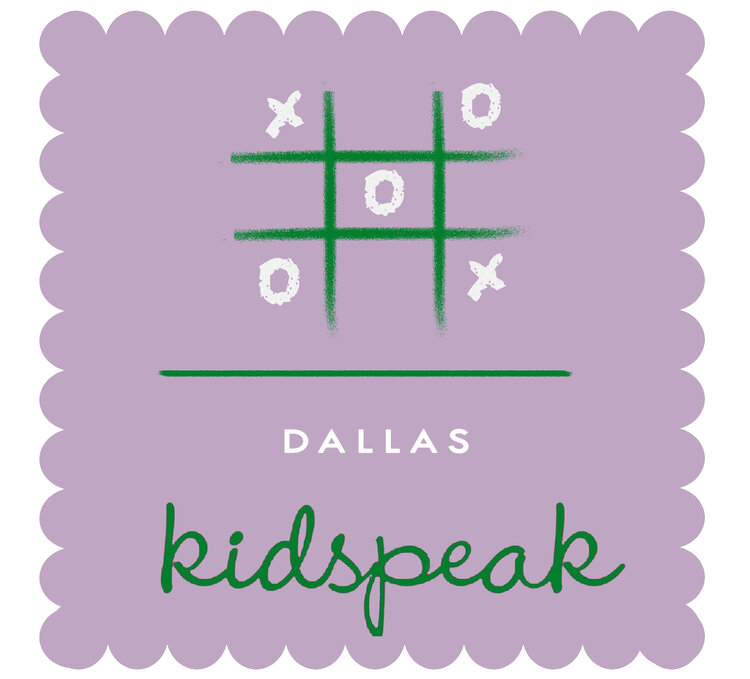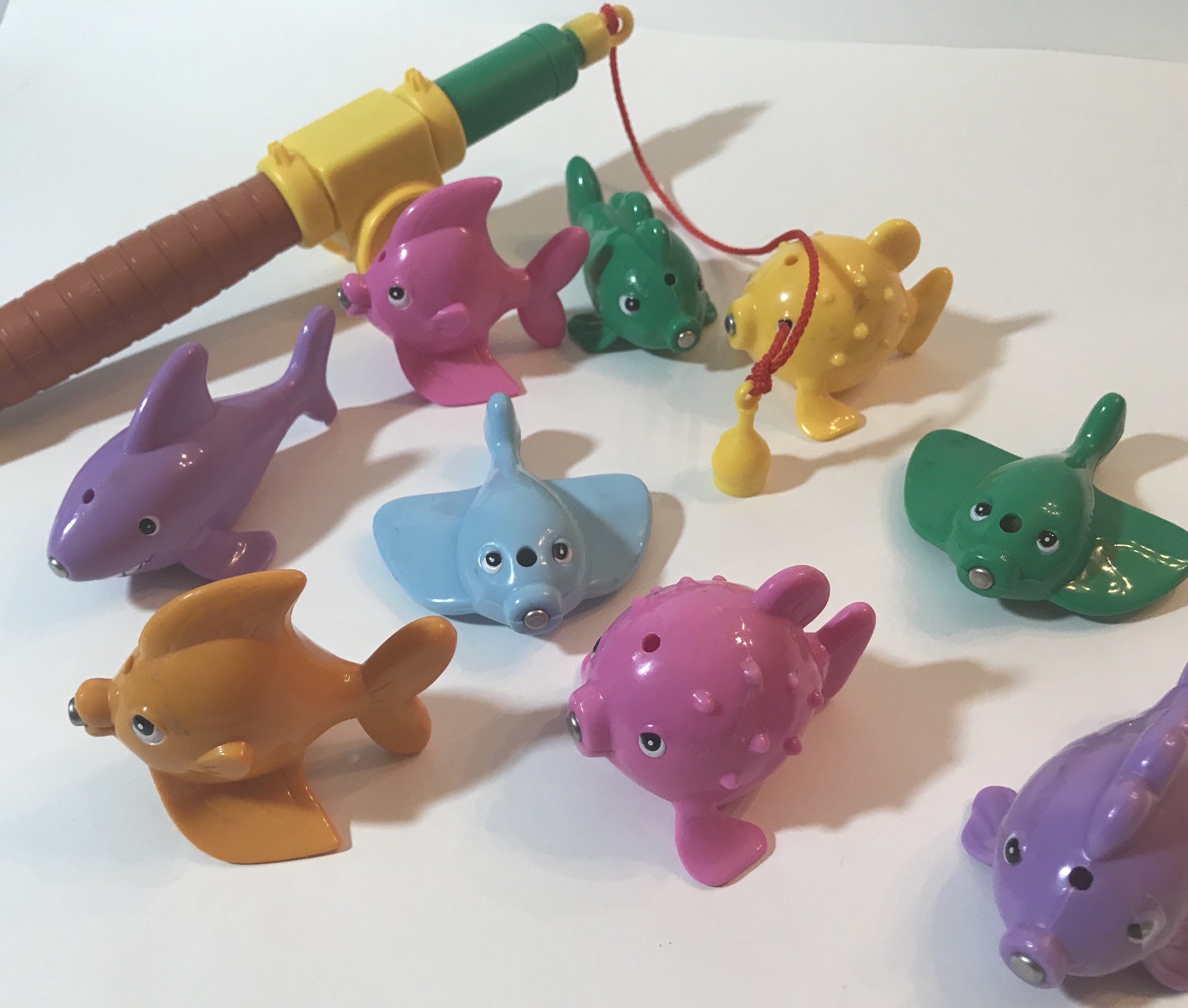With all the new fangled gadgets and gizmos, iPhones and iPads and Legos galore, we thought we’d go back to the basics and share with you some of our favorite toys for little ones. The list is endless but we narrowed ours down to a few things that not only we love, but that kiddos love as well. You can facilitate some great communication interactions and also work on some other important skills and your child won’t even realize that they are “working” on their development. Here are a few of our favs and why we love them:
Bubbles
Bubbles are hands down always a favorite of little ones. What’s not to love? We like to use the old school design of simply bubbles and a bubble wand. This way your child keeps coming back to you to interact, has to take turns and is likely to ask for help, a very important social communicative intention. You can also work on fun comments like ready, set, blow; pop; big; little; wow; up; down and more. Also, we recommend a “no spill” bubble tumbler, which is one of the best kid inventions of all time: http://www.amazon.com/Little-Kids-Inc-093539001594-Original/dp/B00000K163/ref=sr_1_3?s=toys-and-games&ie=UTF8&qid=1365775992&sr=1-3&keywords=little+kids+bubble+tumbler
Mr. Potato Head
Another big time favorite of kids. We love Mr. Potato Head for many reasons but especially since he helps our kids work on learning body parts in a fun naturalistic way. Check out our blog on teaching body parts: https://www.kidspeakdallas.com/kidspeakblog/teaching-body-parts Mr. Potato also encourages finger and hand strengthening as well as simple pretend play skills. Mr. Potato Head can pretend to dance, run, whatever his heart desires. They also now make many different versions of Potato Head like a pirate, princess, Santa and even Darth Vader. Too much fun.
Books
Now this is a given. Start to read to your child as soon as they are born and don’t stop. Books are full of language and can be a calming joint attention activity between you and your child. Point to the pictures as you talk. Describe the pictures. You don’t always have to read the book word for word. Break it down to your child’s level of understanding and expression. They will naturally learn vocabulary, grammar, rhyming and so much more. You can also base a weekly learning theme around a book which will provide your child even more learning opportunities to develop the language.
Check out our blog “The Power of Books”https://www.kidspeakdallas.com/kidspeakblog/the-power-of-books for more tips on how to pick out appropriate books for your child, how to make it a learning experience and a list of a few of our favorite children’s authors.
Balls
Many of us, like our children, are visual learners, auditory learners or a combination of the two. Sometimes we forget about kinesthetic learning. Little ones LOVE to play on big bouncy balls. Help them bounce on their bottoms, roll on their tummies and even roll it back and forth to mom, dad, brother or sister. You will be surprised at how much language will come out of your child once they are moving.
Blocks
Who doesn’t love building towers and then crashing them down? We love these big chunky light weight blocks for little hands http://www.amazon.com/Melissa-Doug-Deluxe-Cardboard-Blocks/dp/B000A12YBW. They help promote constructive play skills as well as problem solving, joint attention and communication. Make up a “build a tower” song and then knock it down together. Your child will think it’s the greatest thing on Earth!
Play-Doh
Play-Doh gives your child endless possibilities. First of all, it will provide them with nice sensory input as well as encourage fine motor skills and strengthening. Second, you can work on many different social communicative intentions like asking for help, protesting, commenting, securing attention, directing attention, requesting and engaging in conversations. We like to start out teaching our children to simply manipulate the dough with their hands by squishing, rolling and pushing. Then we like to add in Play-Doh tools like rolling pins and dough scissors. Kids love to use different cookie cutters like letters, numbers, vehicles and animals. Once they have the constructive part of the play down, then you can add in simple symbolic play by having their shapes perform actions and making pretend cookies or pizza. If you are hesitant about Play-Doh due to the messiness factor, try playing outside or have your child wear a smock and put a table cloth on your table and a sheet on the floor for easy clean up. Encourage your child to help with the clean up!
Fishing game
A simple fishing game is such a fun way to introduce early game play. We start out helping little ones by putting the fish on the floor and using one fishing pole while taking turns. This structure and sitting in little chairs seems to help too. Kids’ language seems to explode because they love this activity so much. You can work on turn-taking language, calling each others’ names (securing attention), using “look” (directing attention) and the kids love to comment about all the different kinds of fish (color, shape, size, type). The fishing game can be a physically tricky activity so your little one will likely need some help. Give them the hand over hand help that they need and then fade away the assistance as appropriate. We got our fishing game at Lake Shore Learning: http://www.lakeshorelearning.com/product/productDet.jsp?productItemID=1%2C689%2C949%2C371%2C895%2C379&ASSORTMENT%3C%3East_id=1408474395181113&bmUID=1365777827885 .
Also check out our blogs Games Galore for some more Game Ideas https://www.kidspeakdallas.com/kidspeakblog/games-galore and Strategies for Learning Turn Taking to help while playing games https://www.kidspeakdallas.com/kidspeakblog/strategies-for-learning-turn-taking
Music
Like books, music is full of language. Kids LOVE music. CDs, iTunes, Kidzbop are all great but YOU are even better. Having fun music time with your child is one of the best learning opportunities you can provide. Slowly sing songs to and with your child and encourage as much interaction as possible. Use simple props like little toys or stuffed animals when you can. We love visual “song boards” and the kids seem to learn the vocabulary even faster when the visuals are added to the songs. You can purchase your own song boards at our online store: https://www.kidspeakdallas.com/store/song-board Check out our blog “If Only Life Was a Musical” for even more ideas on how to incorporate language learning and communication through music: https://www.kidspeakdallas.com/kidspeakblog/if-only-life-were-a-musical
Water Colors
Your child will love this change from crayons and markers. You can work on so much language with water colors: turn-taking language, more, look, calling your name, commenting and conversations. Sometimes water colors can be physically challenging, so give your child hand over hand assistance as needed and then fade away the help. Also the sequencing of the steps can be tricky. Make up a fun song about the steps “water, paint, paper” and sing as you paint.
Farm
Most kiddos love animals. A toy farm is a great way to introduce early symbolic play skills as well as communication. They will have so much fun learning the farm vocabulary (animal names, eat, drink, sleep, play, run, hungry, thirsty, up, down, etc.) and having the animals pretend.
You may also find our 10 Tips to Promote Language Through Play Blog to be helpful https://www.kidspeakdallas.com/kidspeakblog/10-things-to-do-during-play-to-promote-language-skills
If you are uncertain if your child is ready for any of the above activities, we suggest trying them out with your child to see how they do. Is the activity safe? Is your child attending and engaged? Does your child need some assistance? You know your child the best so just try and see how it goes. We hope you have fun helping your child learn with our top 10 speech and language toys!
~KidSpeak, LLC











